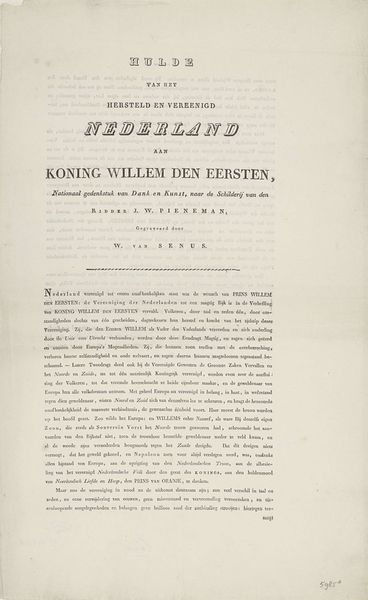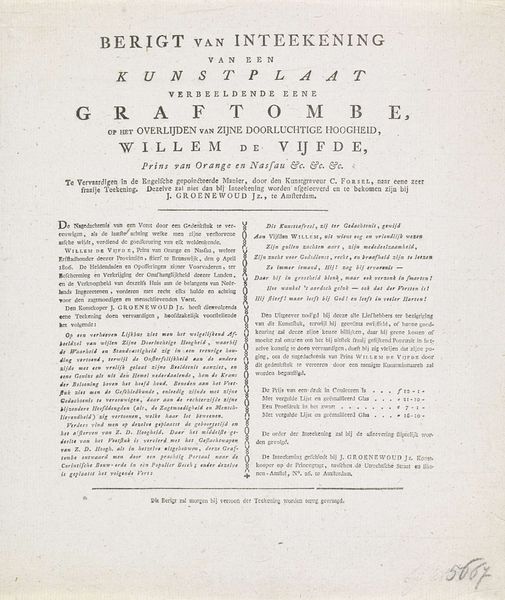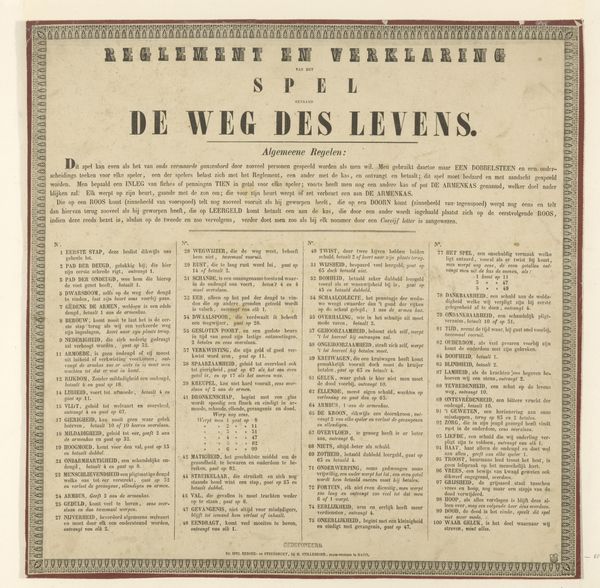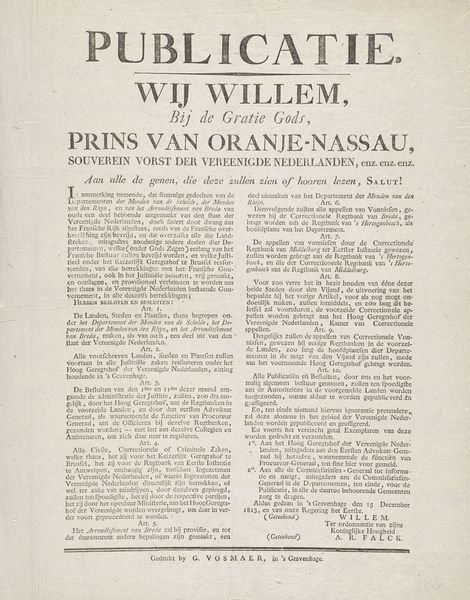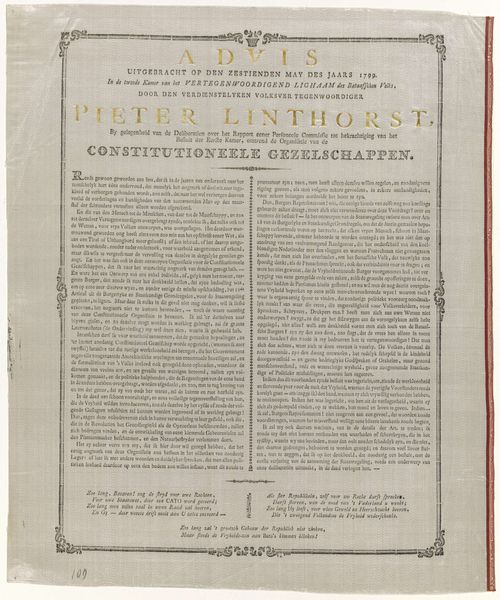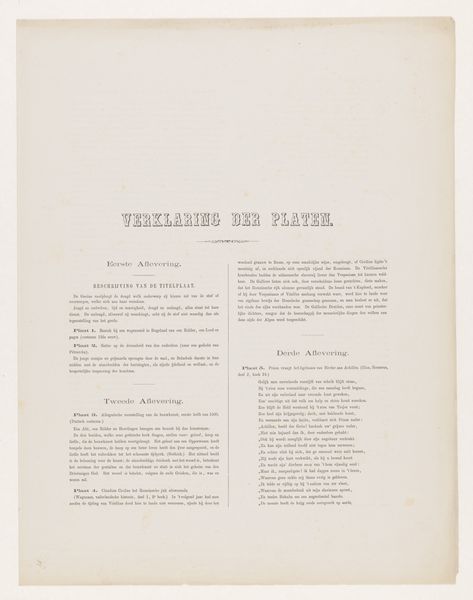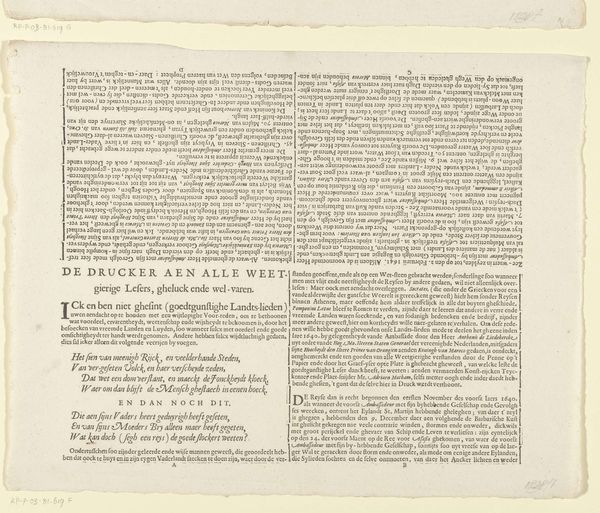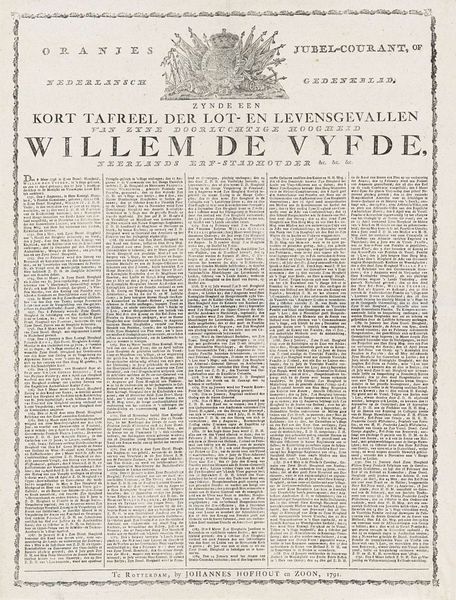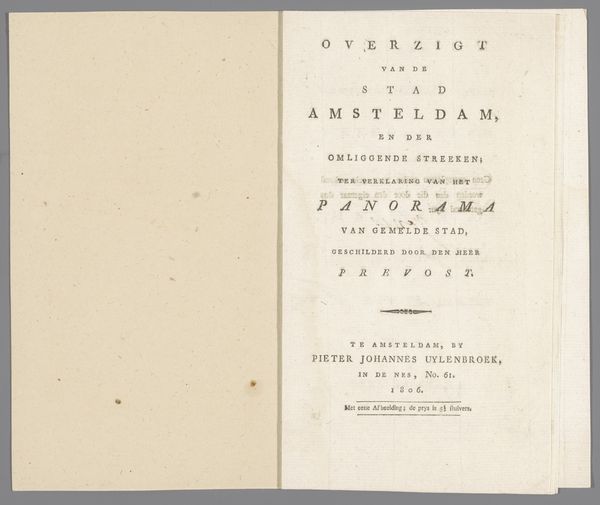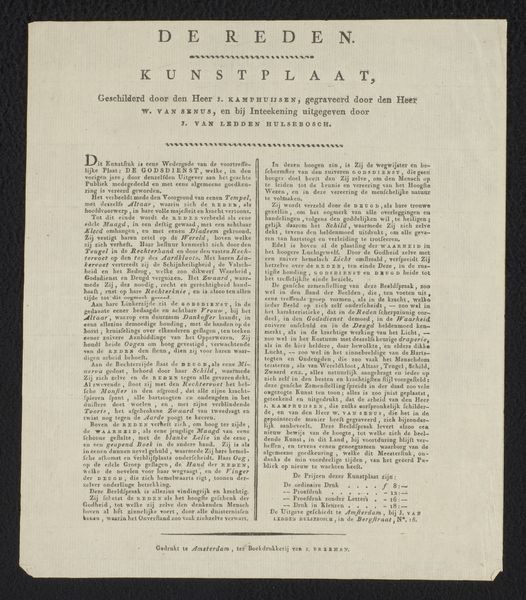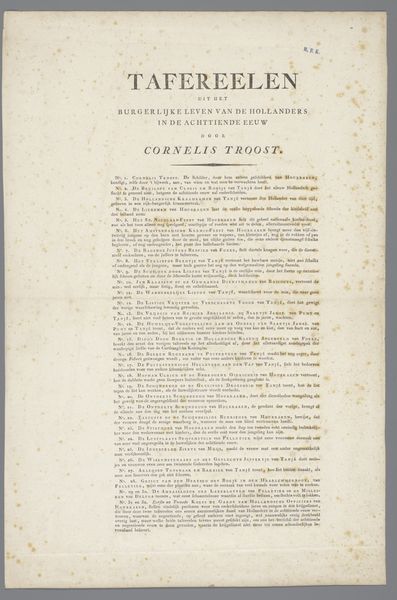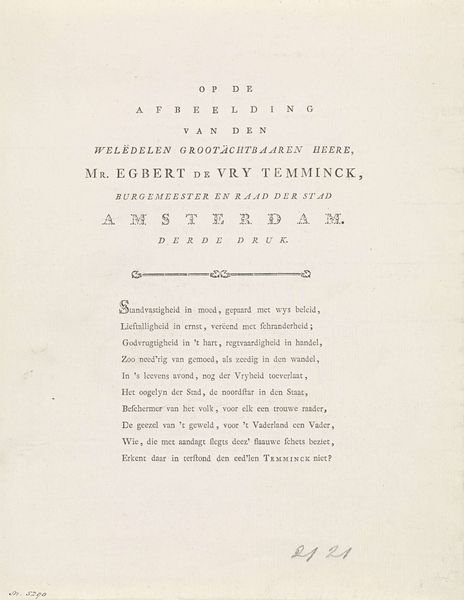
Plan voor een nieuw beursgebouw tussen de Heren- en Keizersgracht, 1879 Possibly 1879
0:00
0:00
print, typography, poster
#
script typeface
#
dutch-golden-age
# print
#
small type
#
typeface
#
hand drawn type
#
bright type
#
typography
#
fading type
#
stylized text
#
thick font
#
handwritten font
#
classical type
#
poster
Dimensions: height 540 mm, width 380 mm
Copyright: Rijks Museum: Open Domain
Curator: This is a fascinating print titled "Plan voor een nieuw beursgebouw tussen de Heren- en Keizersgracht, 1879," which translates to "Plan for a new stock exchange between the Heren- and Keizersgracht canals." It was created by Adolf Leonard van Gendt. The piece seems to function as both typography and a poster. What do you make of it? Editor: The typography feels very formal and dense. I find it fascinating that what seems to be a city plan is presented in this way, almost like a legal document. What were the social and political implications of presenting architectural plans as printed posters in 1879 Amsterdam? Curator: That's an astute observation! The presentation speaks volumes about access to information and the burgeoning public sphere. Van Gendt, as an engineer and architect, wasn't just designing a building; he was participating in a broader discussion about Amsterdam's urban development. Consider how the creation of a “ruime straat” (wide street) connects to power dynamics and the reshaping of the city. Editor: So, the poster isn’t just informative, it’s persuasive? It suggests the street's creation wasn't just a practical decision, but involved political negotiations. How did everyday people engage with these debates about urban planning? Curator: Precisely. It’s about understanding whose voices were amplified and whose were marginalized in this process. The act of printing and distributing such plans implies a targeted audience – investors, politicians, and landowners, but also perhaps the concerned citizenry. Did the proposed exchange offer equal opportunities for everyone in the city? How might communities been impacted by it positively or negatively? Editor: It's a document, but it's also propaganda that offers a window onto the social complexities and inequalities inherent in city planning. Curator: Yes, and the very act of creating a "wide street" is also a political statement. Editor: This piece gave me some food for thought about how design is deeply embedded with historical events! Curator: Absolutely, and understanding those embedded connections enriches our experience and helps reveal hidden influences.
Comments
No comments
Be the first to comment and join the conversation on the ultimate creative platform.
